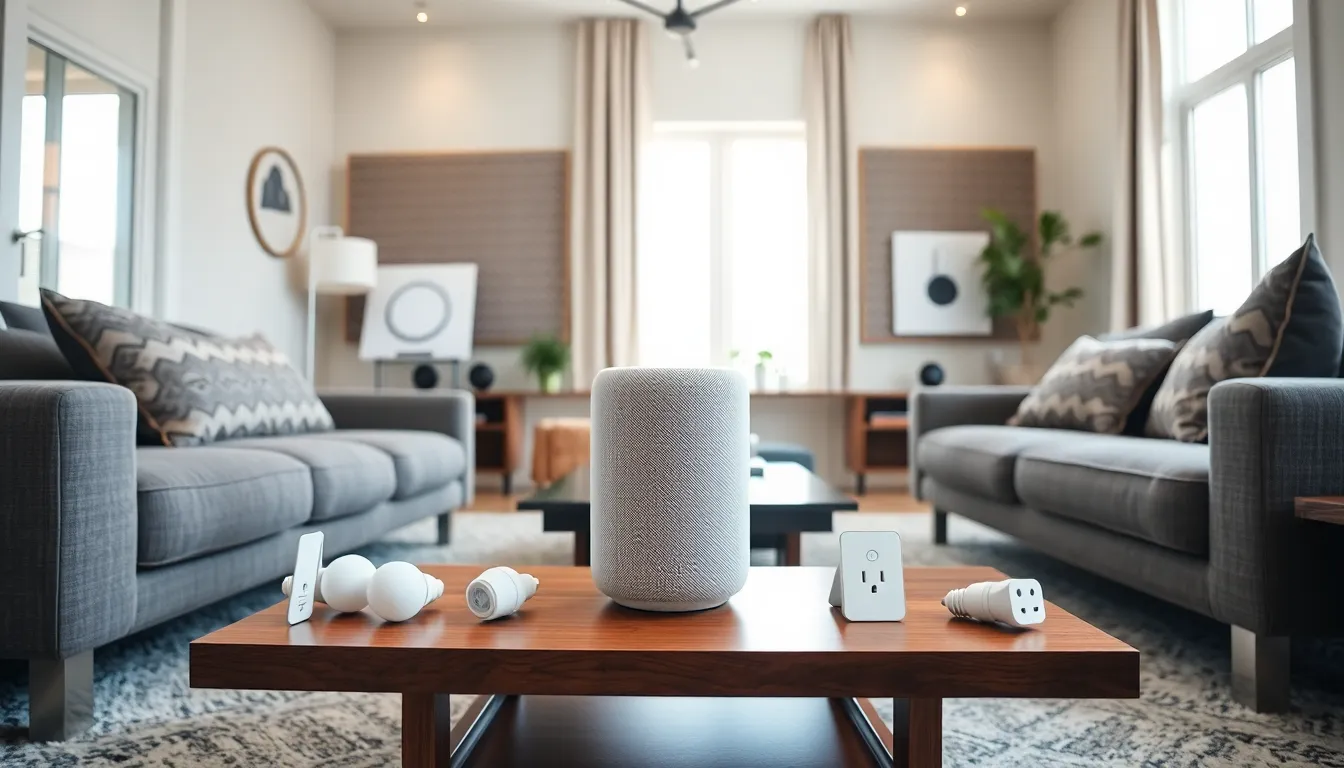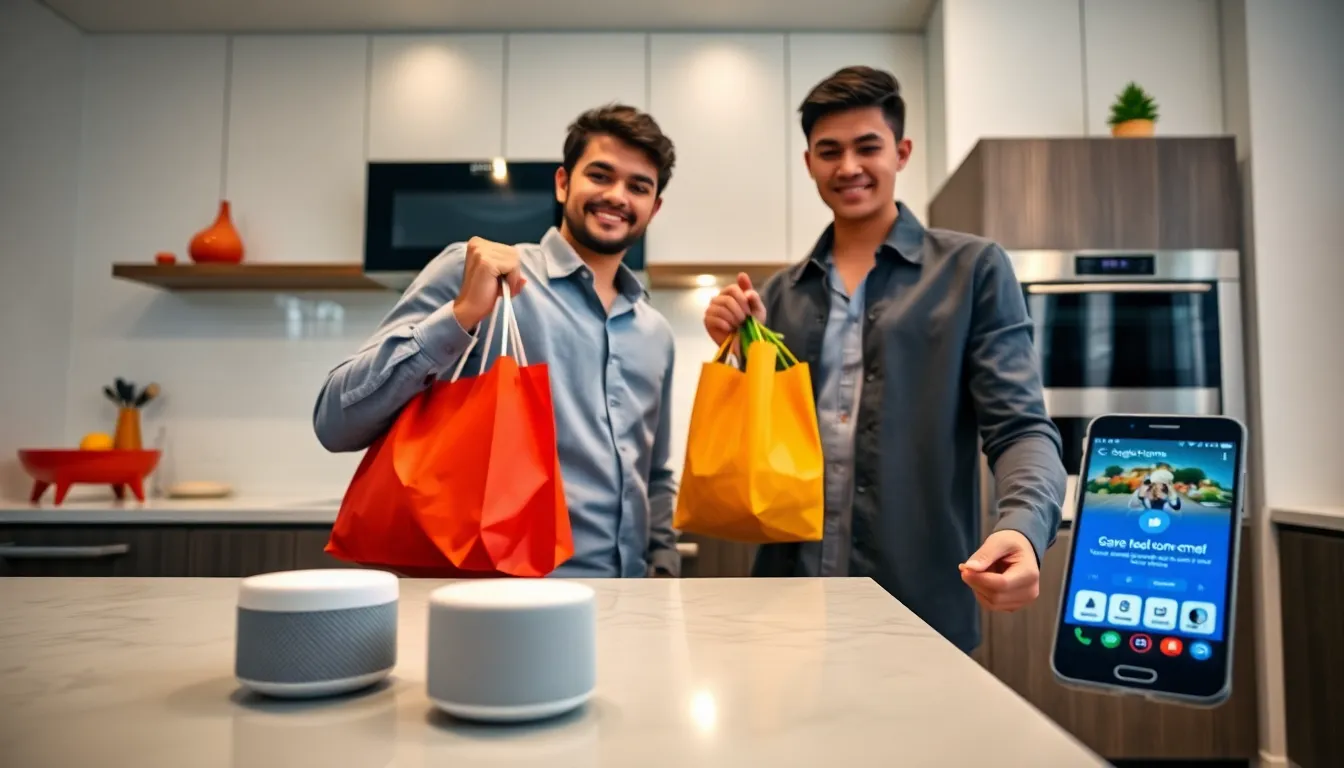Imagine walking into your home and having it greet you with the perfect lighting, your favorite playlist, and a cozy temperature—sounds like something out of a sci-fi movie, right? Welcome to the world of smart home apps, where technology meets convenience in a way that’ll make you wonder how you ever lived without it. These nifty little tools transform ordinary houses into tech-savvy havens, allowing users to control everything from lights to security systems with just a tap on their smartphones.
With the right smart home apps, he can turn his home into a personal assistant that anticipates needs and even saves energy. Whether it’s setting the mood for movie night or ensuring the fridge is stocked for unexpected guests, these apps make life easier and a lot more fun. Dive into the realm of smart home technology, and discover how these apps can elevate everyday living to a whole new level.
Table of Contents
ToggleOverview of Smart Home Apps
Smart home apps provide users with the ability to manage their home devices seamlessly. These applications support integration with various smart devices, allowing for centralized control. Common functionalities include adjusting lighting, regulating thermostats, and managing security cameras.
Electricity savings stem from the effective management of devices through these apps. For instance, automated schedules can reduce energy usage by powering down lights and electronics when not in use. Unified control simplifies daily life, giving users a single platform for managing multiple aspects of their home environment.
User interfaces in smart home apps typically prioritize ease of navigation. Most apps feature intuitive designs, ensuring that users can access functions quickly. Examples of popular smart home platforms include Google Home, Amazon Alexa, and Apple HomeKit. Each platform offers unique features and compatibilities with different devices.
Security benefits enhance overall home safety. Smart home apps provide real-time alerts, allowing users to monitor their property remotely. Notifications regarding suspicious activity enable quick responses, increasing peace of mind.
Compatibility remains a critical feature for these applications. Smart home apps often integrate with third-party devices, expanding the user experience. This flexibility ensures that users can select devices according to their needs, fostering a personalized smart home ecosystem.
Smart home apps significantly enhance home automation. Convenience, security, and efficiency stand as key benefits, making them essential components of modern living.
Features of Smart Home Apps
Smart home apps offer a variety of features that streamline home management. Users appreciate the convenience of centralized control over different devices.
User Interface Design
User interface design focuses on accessibility and simplicity. Intuitive layouts allow users to navigate settings effortlessly. Customizable dashboards enable personalized control views, fostering a more engaging experience. Clear icons and concise labels help users identify functions quickly, reducing the learning curve. Responsive design ensures compatibility across smartphones and tablets, improving accessibility anywhere in the home. Visual feedback confirms actions, leading to greater user satisfaction.
Compatibility with Devices
Compatibility with devices enhances the usability of smart home apps. Many apps support a wide range of products, enabling seamless integration across different brands. Users can connect smart speakers, light bulbs, and thermostats from various manufacturers without hassle. This versatility allows individuals to create a tailored smart home experience. Furthermore, ongoing updates often expand device compatibility, ensuring an evolving ecosystem. Users benefit from the flexibility to mix and match technologies to suit their preferences.
Popular Smart Home Apps
Numerous smart home apps enhance home automation and user experience. Each app offers unique features tailored to various needs.
App 1: Features and Benefits
Google Home centralizes control for compatible devices. It enables voice commands, making interactions seamless. Users can control lights, thermostats, and security cameras through intuitive voice prompts. Integrated routines automate daily tasks, improving energy efficiency. Notifications provide alerts for unusual activities, ensuring enhanced security.
App 2: Features and Benefits
Amazon Alexa excels in versatility and device compatibility. This app supports thousands of smart home products, allowing for a diverse ecosystem. Custom routines and skills enhance functionality, enabling personalized automation. Users can access music and news updates through voice commands, adding convenience. Alexa also offers proactive security features, including scheduled alerts for monitoring.
App 3: Features and Benefits
Apple HomeKit emphasizes privacy and ease of use. Users can manage smart devices through a cohesive app interface. Enhanced security protocols protect user information while connecting devices. Siri integration offers voice control, making it accessible across Apple devices. HomeKit also supports automation through geofencing, activating devices when users arrive or leave home.
Benefits of Using Smart Home Apps
Smart home apps deliver exceptional convenience, allowing users to control home devices from any location via their smartphones. Enhanced energy efficiency emerges as a key benefit, enabling automated schedules that minimize electricity consumption. Users enjoy significant savings through smart lighting and thermostat adjustments based on personalized routines.
Security features also stand out, offering real-time alerts that monitor for unusual activity. Notifications about potential breaches help ensure peace of mind, whether users are at home or away. Cloud-based data storage enhances accessibility, allowing individuals to review security footage or adjust settings remotely.
Integration with third-party devices fosters a cohesive smart home ecosystem. Such compatibility enables a wide variety of products to work seamlessly together, enhancing user experiences. Customizable settings further allow for tailored automation based on individual preferences.
Enhanced lifestyle comes from streamlined routines facilitated by these apps. Daily tasks become automated, freeing up time for activities that matter most. Features like voice control offer added convenience, making interactions with devices intuitive and straightforward.
User-friendly interfaces enhance navigation, reducing any learning curve associated with new technology. With clearer layouts and accessible designs, users can adjust settings quickly, maintaining control over their environments. Regular app updates ensure compatibility with new devices, keeping the smart home experience fresh and relevant.
Overall, smart home apps not only simplify life but also provide security and efficiency that enrich daily living. They represent a significant advancement in home technology, empowering users to manage their spaces effectively.
Challenges and Considerations
Smart home apps face several challenges that users should consider. Security vulnerabilities expose devices to potential hacking, which can compromise user privacy and home safety. Ensuring strong password protocols and enabling two-factor authentication can mitigate this risk.
Compatibility issues arise due to the vast array of devices on the market. Not every smart home product works seamlessly with all apps, leading to frustration for users trying to build a cohesive system. Researching device compatibility before making purchases can help alleviate such concerns.
User interface usability is another key consideration. A complex interface can frustrate users, especially those who aren’t tech-savvy. Favoring apps with intuitive designs promotes easy navigation and enhances the overall user experience.
Cost implications can make smart home systems less accessible. Initial investments for equipment and ongoing subscription fees add to the total cost of ownership. Evaluating the long-term value versus upfront costs is essential for users considering these technologies.
Dependence on internet connectivity can also pose challenges. Smart home devices require stable and reliable internet for optimal performance. Users should assess their internet infrastructure to ensure it meets the demands of frequent smart device interactions.
Moreover, privacy concerns should not be overlooked. Many smart home apps collect user data for functionality improvements but may raise questions about data security. Familiarity with an app’s privacy policy helps users understand how their information is handled.
In sum, navigating the landscape of smart home apps necessitates careful consideration of security, compatibility, user interface, costs, connectivity, and privacy. Being informed empowers users to make choices that enhance their smart home experience while minimizing potential drawbacks.
Smart home apps are revolutionizing how individuals interact with their living spaces. By providing centralized control and automation, these applications enhance convenience and security while promoting energy efficiency. Users can tailor their smart home ecosystems to fit their unique needs, enjoying the benefits of real-time monitoring and personalized settings.
Despite the advantages, it’s crucial to remain aware of potential challenges such as security vulnerabilities and compatibility issues. By taking proactive steps to address these concerns, users can fully embrace the smart home experience. Ultimately, smart home apps represent a significant leap forward in home technology, making everyday life more manageable and enjoyable.








